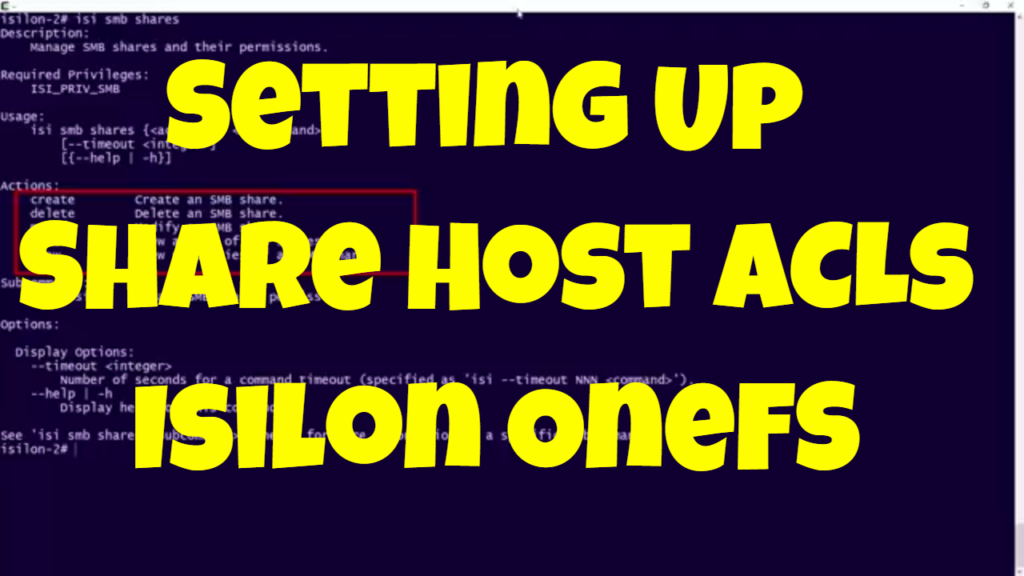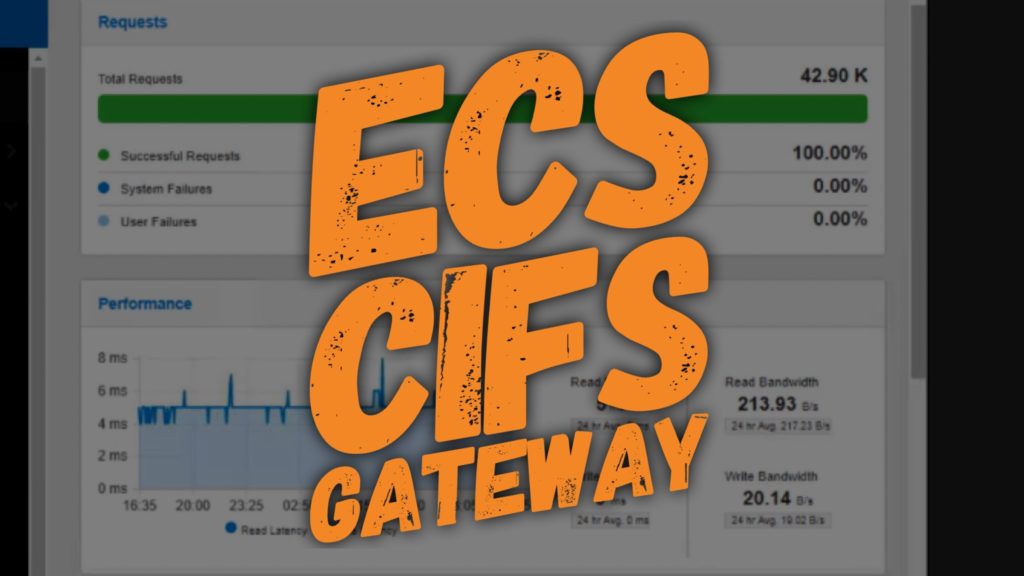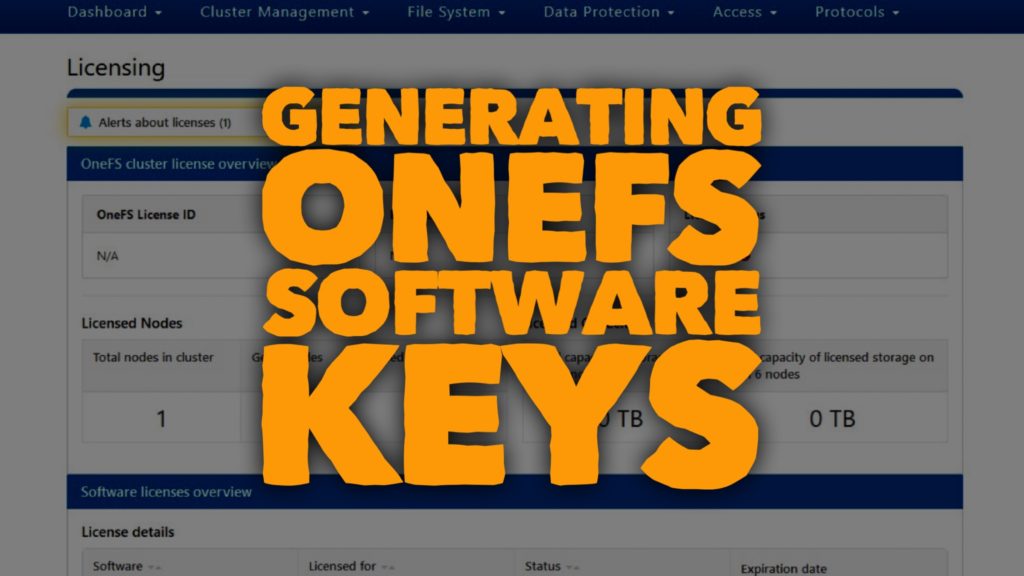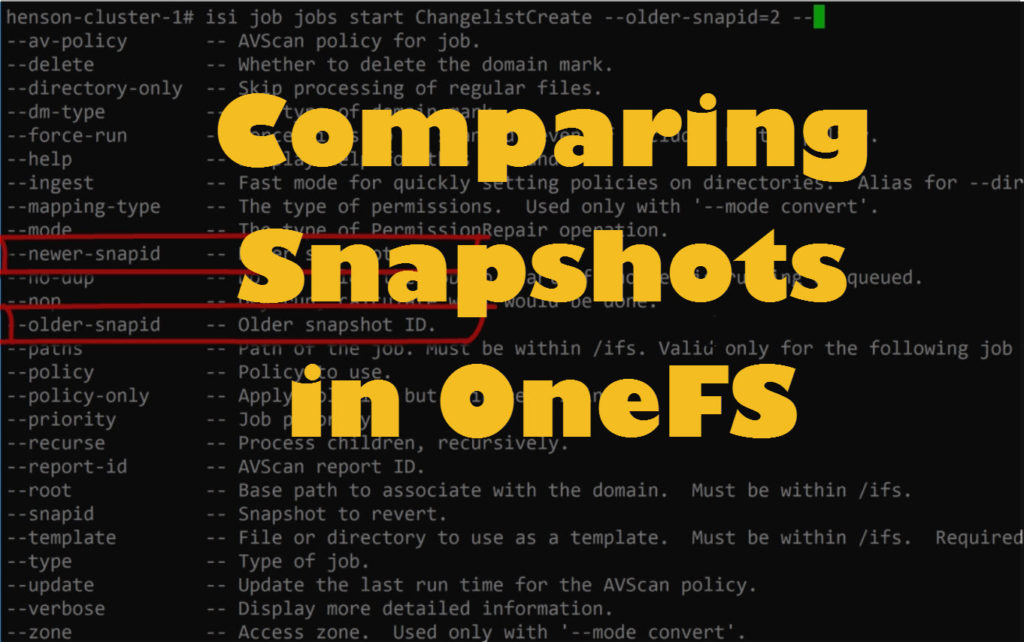How do you allow or deny host for SMB shares?
In Isilon’s OneFS administrators can set Host ACLs on SMB shares. Setting up theses ACLs can add an extra layer of security for files in a specific share. For example administrators can deny all traffic except from certain servers.
OneFS Setting Up Share Host ACLs Commands
Below are the commands used in the Setting Up Share Host ACLs demo. NASA refers to the SMB Share used deny all traffic except from the specific host or hosts.
List out all the shares specific zone
isi smb shares list
View specifics on particular share in access zone
isi smb shares view nasa
Modify Host ACLs on particular share in access zone
isi smb share modify nasa --add-acl
Clear Host ACLs on specific share
isi smb share modify nasa --clear-host-acl or isi smb share modify nasa --revert-host-acl
Video – Setting Up Host ACLs on Isilon File Share
Transcript
Hi, folks. Thomas Henson here with thomashenson.com. And today is another episode of Isilon Quick Tips. So, what we want to cover on today’s episode is I want to go in through the CLI, and look at some of the commands that we can do on isi shares. And specifically, I want to look at some of the advanced features. So, something around the ACLs where we can deny certain hosts or allow certain hosts, too. So, follow along with me right after this. [Music]. So, in today’s episode we want to look at SMB Shares, but specifically from the Command Line. What we’re really going to focus on as I open this Share here is some of these advanced settings. So, you can see that we have some of these advanced settings, like continuous availability of time. And it looks like that we can change some of these. But when we change them, we’re just going to type in how we want to change those here. So, if you wanted to, for example in the host ACL, be able to deny or allow certain hosts, this is where we can do that. But let’s find out how we can this from the Command Line. Because there is a couple of different options, and a couple ways we can do it, and specifically we want to learn how to do it from the Command Line. So, here we are. I’m log back in to my Command Line. So, you can see I’m on Isilon-2. So, the first command I want to do is I want to list out all those SMB Shares that we had. So, we had three of those. So, the command is that we’re going to use in is the smb shares. And I’m just going to type return, so we can see what those actions are. So, you can see that we can do a list, which is the first thing we want to do. But you can also create those shares, you can delete shares, and we can view specific properties on each one of those shares. So, going back in. Let’s run a list on our shares. And you can see… All right. So, we have all those shares that we were just looking at from our [INAUDIBLE 00:02:00]. One thing to note here is if you are using this shares list command and you don’t see your zones, make sure that you type in the zone here. So, we will type in a specific zone. So, if you didn’t see the shares, make sure that you’re specifying exactly what zone there is. I only have one zone in my lab environment here on the system, so I can see that all may shares are there. So, now that I know my shares are there, let’s go back. I want to look at the nasa share that we have. So, let’s use the view command NASA. And you can see here that it’s going to give me my permissions, but then also those advanced features that we were talking about, we can see those here. So, for example we have the Access Based Enumeration. So, if you’re looking to be able to hide files or folders for users that don’t have those permissions, you can see that if that set here. Then also the File Mask. So, you can see that on default directly in File Mask is 700. So, if you’re looking about [INAUDIBLE 00:02:54] the File Mask is, if you’re not familiar, that’s the default permissions that are set whenever you have a File Directory that’s created in this share. So, you can see that in mine, the default setting is 700. Then specifically, the one that I really want to go over was the Host ACL. So, you can see the Hos ACL. I don’t have anything set here. And this is the property we can change, that will allow or deny certain hosts to the specific share. So, one of the reasons this came up is we were trying to secure an application from a share, and we wanted to able to say, ͞Hey, it’s only going to accept traffic from two or one specific server, and then we’re going to deny all those.͟ So, what we’re going to do is I want to walk through how to do that. So specifically, we’re still going to use our isismb share. But now we’re going to use the modify. So, you see the isi smb share modify command. You can see that when we do that… I’m just going to show you some of the commands that we have here. But you can see we have a lot of different options we can do. But the first thing is, remember, we’re going to type in that share.
So, here I want to pass in my nasa string. I don’t have to pass in zone, because I only have one zone. But if you have different zones, then you’re going to want to pass that zone in. The command that we’re specifically looking for is this host-acl. So, we have some options here with the host-acl. We can clear the host, we can add a host, and we can remove a host. So, what we want to do is we want to add a host that’s going to allow for host coming from. We’re just going to say 192.170.170.001. Then we’re going to deny our host from that. So, we’re going to clear this out, so we can have that at the top of the screen. So, you can see we have it here. So, that isi smb shares modify. Then you’re going to put in here you share name. So, mine is nasa. And we’re going to do –add-host-acl=, the first thing that we’re going to do is we’re going to allow. So, we’re going to allow traffic from 192.170.170.001 Then we’re going to use a comma to separate that out, and then we’re going to say that we’re going to deny all. So, specifically we could do this different, and say that we want to allow traffic from all and then deny from specific ones. But from this use case, and this is probably the most common one especially when you’re trying to lock down a certain share, you’re going to want to use this command. So, we’re typing the command, get the command prompt back again. And now let’s do that view. So, it’s view our nasa, and see if our changes are in there. So, you can see in our Host ACL, we have it. Then if we wanted to go back to our share from the [INAUDIBLE 00:05:43] and just see if those changes took. You can see in our advanced setting here, now it showing us are allow and deny all. Now, [INAUDIBLE 00:05:52] to say that I want to keep this going on my [INAUDIBLE 00:05:55] or if I want to revert back. So, there is a couple of different options. If you remember we had the clear-host-acl or the revert back. So, now I can just use this isi smb shares modify on my nasa directory. Once again, just as a reminder, use your own name if you have a specific zone. Then now I can revert my Host ACL. Now, we have that, I’m going to clear this out, and check. You can see our Host ACL is reverted back. We don’t have one set there. So, now we’re allowing traffic as long as you have the permissions to get to this file, and we don’t have one set. Well, that’s all for Isilon Quick Tips for today. Make sure to subscribe so that you never miss an episode of Isilon Quick Tips, or some of the other amazing contents that I have on my YouTube Channel here. And I will see you next time. [Music]



